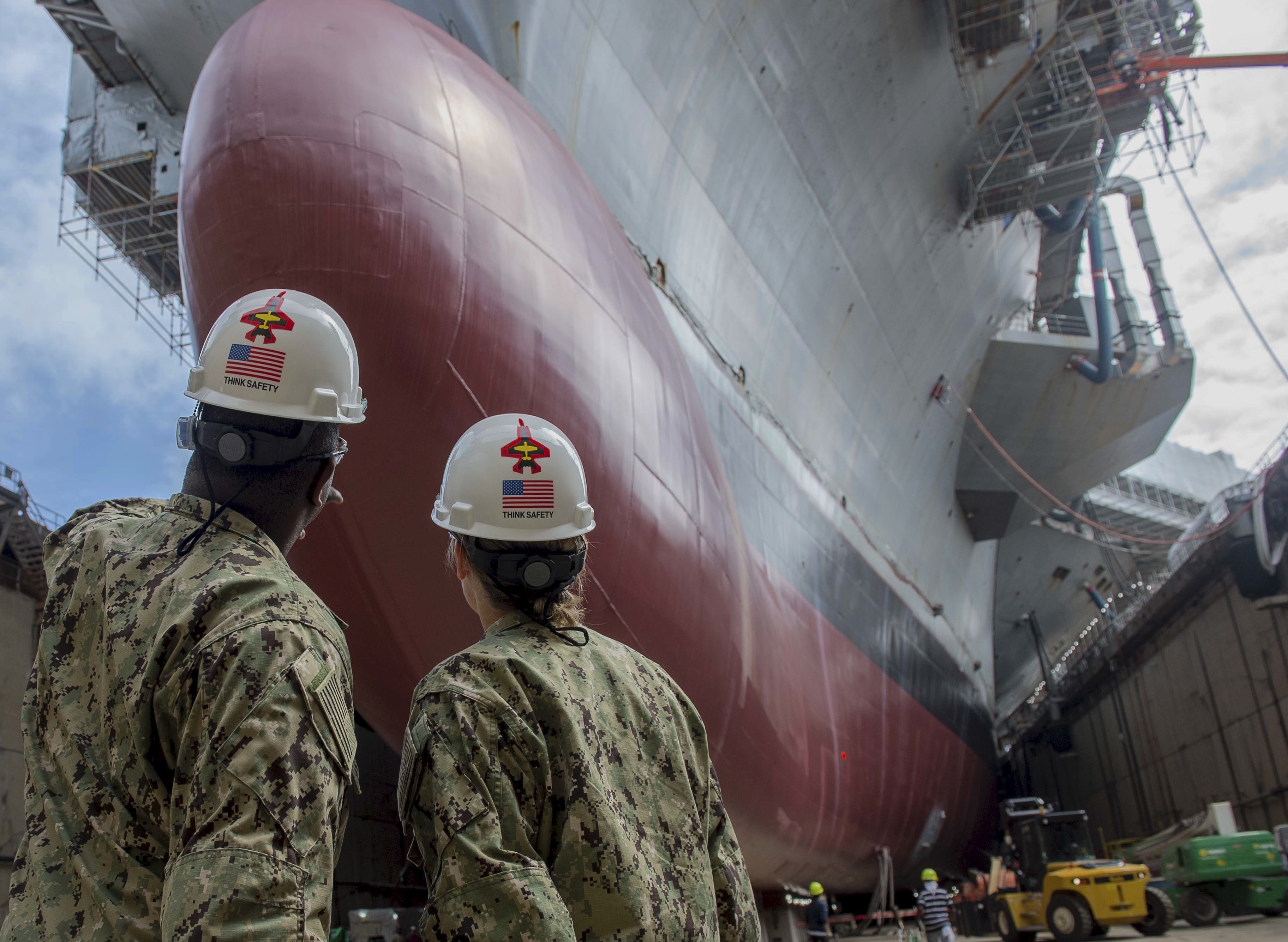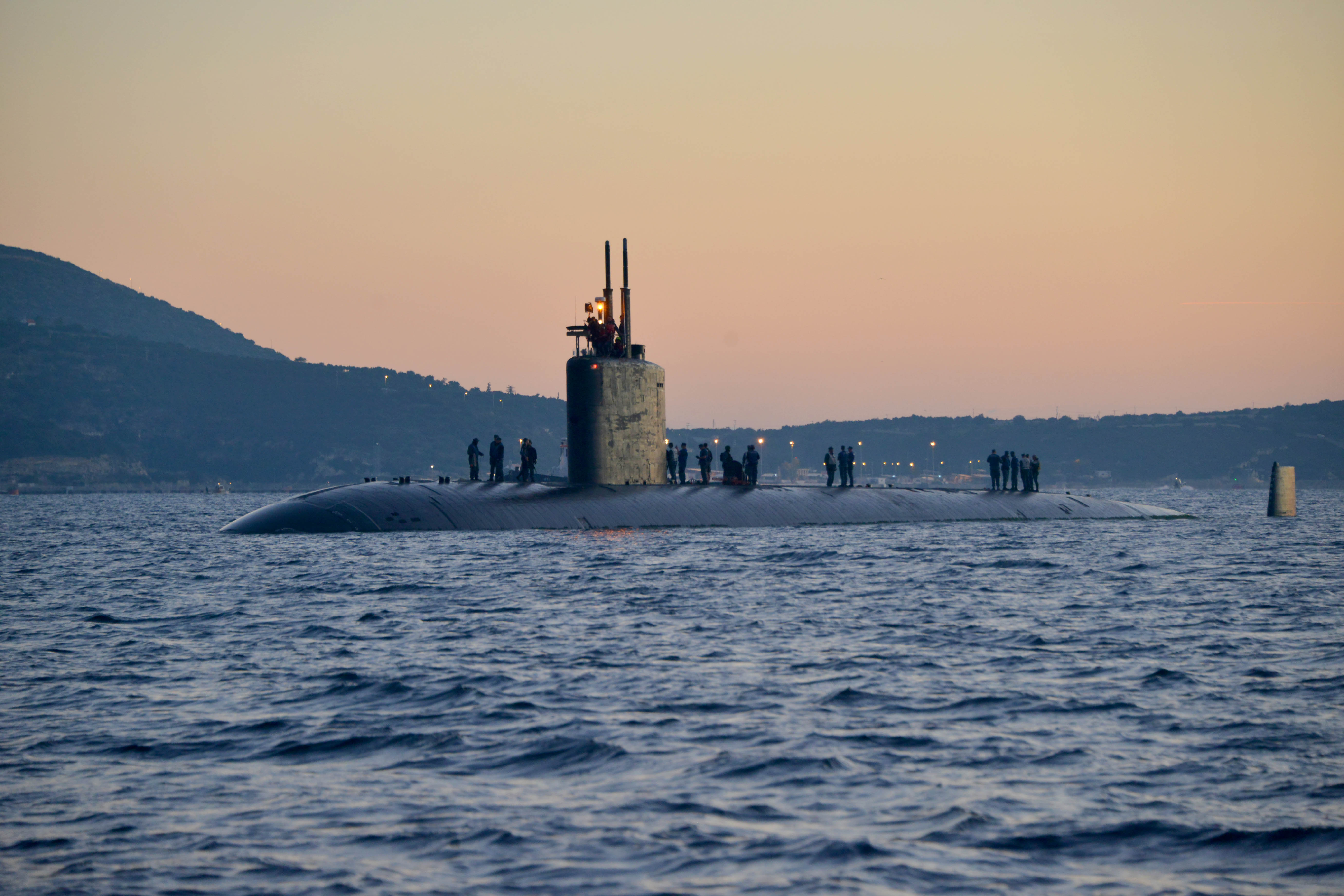
The following post has been updated to correct the name of a submarine referred to in the story. On Friday, Vice Adm. Tom Moore referred to attack submarine USS Asheville (SSN-758) not USS Nashville.
The heads of the Navy’s ship maintenance efforts want to get destroyer work back on track using new data tools and an under-development predictive schedule to prevent another major backlog in repair work.
Unlike the service’s nuclear force, the conventionally powered surface ships have suffered inconsistent repair periods to help meet the demands for guided-missile combatants during the wars in Iraq and Afghanistan. In order to get the ships out for tasking faster, the service often deferred repairs for its surface ships.
That deferred work is now wreaking havoc on Naval Sea Systems Command’s ability to effectively predict when ships will be able to leave the yards and return to the fleet, with the lingering effects of that deferred maintenance causing work periods to go long and disrupting ship training and deployment schedules.
“We’ve been a little bit less rigorous on the surface side of the house for probably over the last 10 to 15 years, and we’ve paid the price for that,” NAVSEA commander Vice Adm. Tom Moore said.
“That’s also some of the reasons some of these [current] availabilities have gone longer than expected, because they’ve been so far off their maintenance plan that when you get in there, just like your car, you find unexpected things that delay the availability.”
At the moment, Moore said that 75 percent of the Navy’s Arleigh Burke-class destroyers were hewing to the service life plan, or about 50 destroyers. NAVSEA predicts the other 25 percent will lock in to plan by 2023.
“Last year we delivered 16 percent of our DDGs on time. This year was up to about 40 percent, and we’re forecasting six out of the next eight DDGs will be on time [next year]. So, I think we’re headed in the right direction there,” Moore said.
The Navy is hoping that new ways of examining maintenance data will help alleviate wasted time as maintainers dig through backlogs of work.
While crunching maintenance data to develop plans on how the Navy will work on a ship is not a new practice for the Navy, the service is refining the packages it budgets for as it digs out of the maintenance backlogs, James Geurts, assistant secretary of the Navy for research, development and acquisition, told reporters.

“We’re starting to see the latest generation. Those plans get closer and closer to actual performance or more predictive,” Geurts said. “And so then we can get more predictive planning out there and then make smarter choices and not overload or underload our plans.”
Moore said that in their models, destroyer maintenance availabilities where items are added to the work package past the 60-percent complete point almost always deliver late.
Rather than allowing the same repair items to continue to bog down availabilities by being added in at the last minute, the Navy is now assuming that some of this work will have to be done and is including it in the work package from the state.
For example, the uptakes for the four LM-2500 gas turbines for the destroyers almost always need to be reconditioned due to corrosion, but that work isn’t planned for in the package.
“For years, we’ve gone with a condition-based maintenance philosophy, which is, open up, inspect and then decide what work you’re going to do,” Moore said.
Now, he said, “we’re taking things like that and going into what we call directed maintenance, which we say, ‘look, we know we’re probably going to find this, we’re going to put it in the work package and pay for it upfront, and we’re going to plan to do it on day one’,” Moore said.
If the Navy doesn’t find the problem it predicted, it’s less of an issue than the other way around.
The service is also cautiously optimistic about the progress of its submarine maintenance programs.
The delay in repairing the attack submarine USS Boise (SSN-764) was a wake-up call for NAVSEA. The Los Angeles-class attack boat has been waiting for maintenance since its last deployment ended in early 2015. During the wait, Boise lost its certification to dive and been held up as an example of the Navy’s failures to keep up with maintenance in its public yards.
“Obviously the big challenge for us has been submarine maintenance, Boise being the poster child for that,” Moore.
“For the first time, this was a recognition that we didn’t have enough capacity in the yard. Our past practice would have been to stick a submarine in and have a boat like an Albany or Asheville or Connecticut and deliver 500 or 600 days late. We were kidding ourselves that we could get the work done. So, in many ways, Boise caused us to really take a hard look at what we need to do in our naval shipyards.”
Moore and Geurts told reporters they were optimistic about the progress in public yard performance and allowed the service to farm out some of the submarine work to private yards.
“We’re working to provide an executable plan that entices the private sector to grow the capacity they need to execute the work,” Geurts said.
“The data’s getting better.”
As an outgrowth of the Fiscal Year 2019 National Defense Authorization Act, Geurts announced a new deputy assistant secretary of the Navy for sustainment (DASN-S) to oversee the long tail of warship and aircraft ownership for the service.
“This position will allow us to improve and align the complex drivers of maintenance and modernization completion that, in turn, will increase our output to the fleet. We have to get better, and this will help,” Geurts said in a statement.





